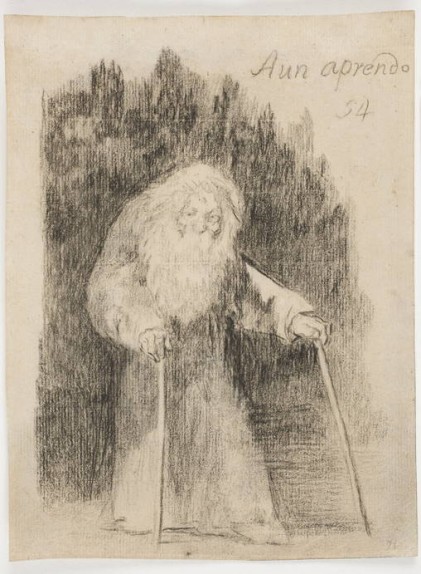the image raises a question about what is really necessary in order to perform and headstand. Ben Gurion does not give the impression of a very strong man in this picture, but he can stay there in this awkward position; once he learnt it, apparently he used to practice this posture every morning as it gave him relief from his back pain. My yoga teacher always points to “core strength” as a key feature to achieve this position.I think that the same concept applies to many motor ability where we use strength as a poor substitute for lack of coordination. Strength is needed if you want to really push toward the sky the legs, whereas the key mechanical requirement is the correct alignment of the vertebrae and the rotation of the pelvis to lift the legs, once you learn this aspect you reach the position effortlessly. Part of the weight is transmitted through the hands but the alignment of the vertebrae is fundamental as the cervical are much smaller than the lumbar vertebrae and a transverse component of the force can result in an injury. Psychologically the difficulty is related to the instinctive fear of falling that can cause unnecessary contraction and unwillingness to rotate the sacrum. In fact the headstand in Feldenkrais view seems to me achieved through a controlled fall as can be seen in some lessons preparing for the position, where the final part of the fall is also practised in a reversed way. The idea is to perform a “carp” jump from standing with the knees bent where the whole of the spine moves up and if enough momentum is given we can find ourselves almost on the head. Reflecting on headstand is another way to explore conceptual differences between Yoga and Feldenkrais, I discuss the different approach to breathing here. Whilst Feldenkrais always looks for paths of effort and pain minimization, extreme postures in yoga are achieved in some instances despite pain and muscular effort and, in the specific case of headstand, extension of the muscles is searched in the position. This is a consequence of a desire to achieve an “ideal” posture. The very definition of ideal posture is, in my opinion, wrong in Feldenkrais, as the status of the neural system determines the distribution of tonus and the posture. Creating options in the motor cortex via neuroplasticity can improve the posture only if the posture is compatible with the absence of pain and strain in the individual. In the initial learning phase, strength can help to achieve the desired result and it can be useful, however to achieve improvement the unnecessary effort needs to be reduced over time and when strength is not readily available the movement needs to be learned in the most efficient way. This feature is common to elderly people and children, a baby learning to sit has reduced contractile strength in his muscles compared to an adult and the head weight is massive compared to the rest of the body, so he has to organize the whole of his body to reach the sitting position and he will fall hundreds of times before he learns to recognize the vertical alignment that provides support for his heavy head.



